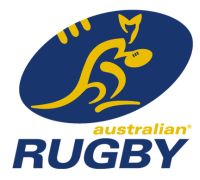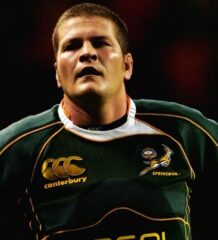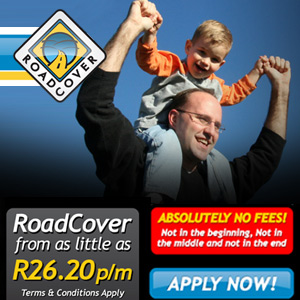Sevens, Women’s Rugby and Junior Rugby increase in historic Olympic year
Central to Australian Rugby’s 2016-2020 Strategic Plan, is making rugby ‘a game for all’.
In 2016, efforts were made to widen access to rugby playing opportunities and reach out to new participants in rugby’s historic ‘Olympic year’.
The Australian Rugby Union (ARU) Annual Report, which was released today, showed non-traditional rugby formats experienced the greatest participation growth (where participation is defined as playing in five or more games or structured sessions):
- Sevens grew by 37% overall (33% in female sevens, 39% in men’s sevens)
- There were 11,400 Foxtel VIVA7s participants; 8,000 of which were paying participants with profits going directly back to clubs
- There were 54,890 Game On participants (more than double 2015 figures)
This growth is encouraging as these formats are attracting new and more diverse participants to the game, which is a key focus for Australian Rugby as it looks to create a sustainable participant base for the future.
There was a 0.8% decline in Club XV’s participation. The figures show a slight reversing of trends of prior years (i.e. improving on the 7.6% decline in Club XVs from 2014 to 2015), and participation growth in key age groups:
- U6-U11 (+3.5% increase)
- U12-U18 (-7.5% decline)
- Adult (-0.43% decline)
The 3.5% increase in the U6-U11 age groups can be traced back to the successful roll-out of the five-week school rugby program ‘Game On’ which was delivered to 26,469 primary school students in 2015, prompting the 3.5% uplift in U6-U11 junior rugby club registrations in 2016.
The participation declines in the U12-U18 and Adult age groups were disappointing but not unexpected. Nationwide, recruitment and retention of participants in the U12-U18 age bracket are challenging, as adults and teens especially have more sport and entertainment options at their disposal than ever before. However, despite the net decline in Adult Club XVs participation, it was encouraging to see Adult Club XV’s growth in Queensland, Victoria, WA, ACT and Northern Territory thanks to improved competition management structures and a focus on player retention from schools to clubs in Queensland.
The 950+ rugby clubs across Australia continue to be the most important caretakers of the game, and the ARU is committed to strengthening clubs by supporting them to engage new participants. Already, Sevens, VIVA7s (non-contact rugby) and Game On (a five-week rugby program delivered in primary schools) are bringing more people into rugby clubs, and making rugby more accessible by expanding beyond the traditional male private school channels. In 2016, more than 60% of the primary schools that ran Game On were government schools.
Women’s rugby participation continues to soar worldwide and in Australia. The ‘Olympic’ effect of the Women’s Sevens Rio gold medal was significant, contributing to a 33% spike in female Sevens participation, spearheaded by efforts in Sydney and Brisbane schools. Meanwhile, women’s Club XVs rugby grew by 24%.
Targets for Indigenous participation were also exceeded with 2,426 Indigenous students participating in Deadly7s, a five-week primary schools program that introduce Aboriginal and Torres Strait Islander boys and girls to rugby, while also teaching students about Indigenous culture, the importance of attending school, healthy lifestyles and teamwork. The numbers substantially exceeded the original 2016 target for Deadly7s of 400 participants.
Overall, more people were involved in rugby competitions and programs (five or more games or structured sessions) in 2016 than ever before. Across the country, there were 273,095 participants, reflecting an increase of 2.1% (or an additional 5,632).
A further 275,307 people across the country had a rugby participation experience within a school, club, camp or event environment.
As per the commitment made in September 2016, the ARU has commenced a review of the Strategic Plan based on feedback from Member Unions and key rugby stakeholders. The review will ensure that Australian Rugby’s action plans match the reality on the ground. Given the feedback from the rugby community, updates to the Strategic Plan will emphasise the strategic direction of Australian Rugby at the grassroots and community level.
For 2017, the ARU will concentrate on consolidating playing numbers at the grassroots and community level and increasing the share of women playing the game.
Rugby clubs will be a major focus, by ramping up efforts to get more Game On participants registering for junior rugby following their five weeks of learning and playing rugby at school. Children represent the future of Australian sport so it is critical that Australian Rugby is introduced to them at an early age and becomes part of their lives (and their parents’ lives), whether they are playing or spectating.
ARU CEO Bill Pulver said: “We set ourselves very ambitious targets for 2016 participation, especially considering our new strategic participation initiatives, Game On and VIVA7s, were only launched in 2015 and these programs generally take a while to build momentum.
“However, what we saw last year was a real appetite for rugby across the country. With the buzz around the Olympics, Sevens participation growth was huge. VIVA7s participation grew by more than 150% with profits from the program flowing directly back into clubs. Game On also exceeded its 2020 participation target, reaching 54,890 primary students, 60% of whom were from government schools.
“While we’re disappointed about the net decline in Club XVs, we have to recognise that our progress in growing other formats of the game is helping to build sustainable growth for the future and that this growth will eventually have positive flow on effects into Club XVs rugby.
“We’re trying to grow the game by making rugby more accessible, and initiatives such as VIVA7s and Game On are enabling us to expand rugby’s footprint so that it becomes embedded in the public and private school systems for both boys and girls.”
KEY NUMBERS
Participation Overall
- 273,095 total participants*, reflecting an increase of 2.1% (or an additional 5,632)
- 275,307 people across the country had a rugby participation experience within a school, club, camp or event environment
Sevens
- Sevens grew by 37% overall
- 33% in female sevens
- 39% in male sevens
VIVA7s
- 11,400 participants for Foxtel VIVA7s (8,000 of which were paying participants)
Game On
- 54,890 primary students participated (up from 26,469 in 2015)
- 2020 Game On participation target was 50,000
- 60% of the primary schools that ran Game On were government schools
- More than 40% of participants were female
Club XVs
Club XVs participation declined by 0.8%, which encompasses:
- U6-U11 (+3.5% increase)
- U12-U18 (-7.5% decline)
- Adult (-0.43% decline)
Women
- 33% growth in female Sevens
- 24% growth in female Club XVs
Indigenous Rugby
- 2,426 Indigenous students participated in Deadly7s
- 2016 target for Deadly7s was 400 participants
*Participation defined as five or more games or structured sessions
Related Posts
« Rugby fans reminded to purchase tickets from official sellers for the DHL NZ Lions Series 2017 Francois Pienaar children’s rugby skills clinic »



















